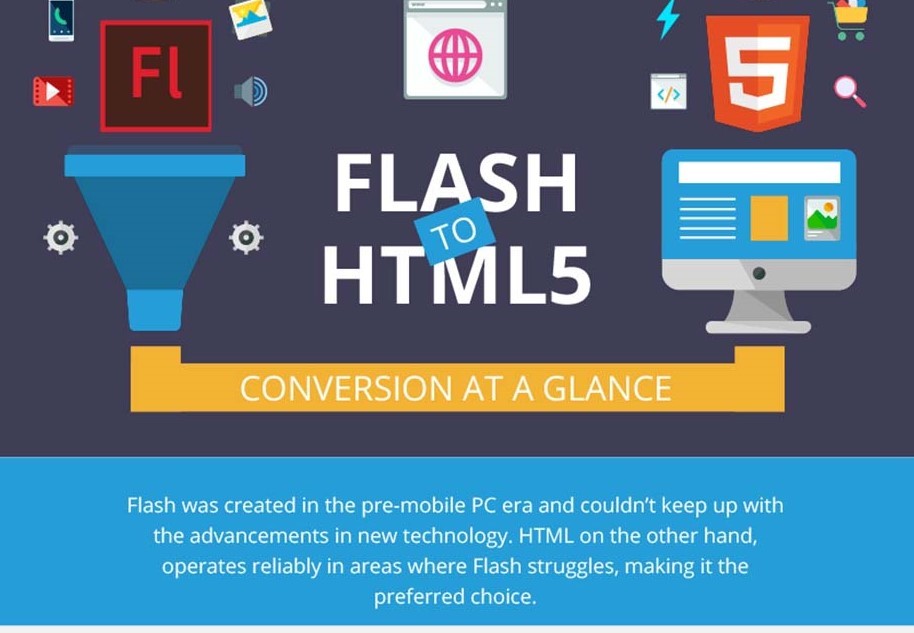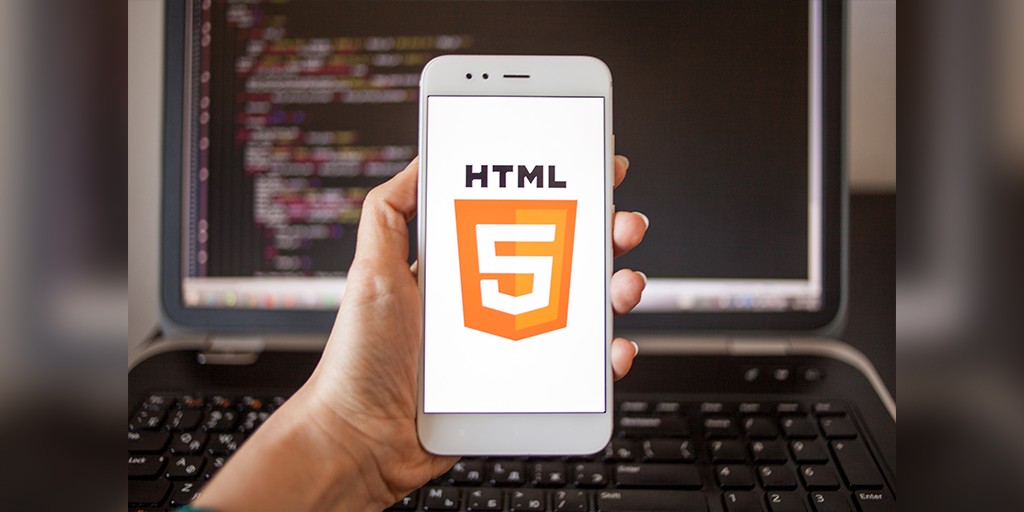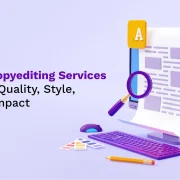
How to Convert your Content from Flash to HTML5?
In 2017, Adobe had made a formal announcement stating that by 2020, the company would no longer support the flash player plug-in. Google and Microsoft too have announced their intention to disable the plug-in in their browsers by early next year, thus bringing the curtains down for Flash. In this blog we’ll discuss about how to convert your content from Flash to HTML5.
Table of Contents:
- What is Flash?
- What is HTML5?
- What to do with Content that is already Published in Flash?
- Steps to Convert your Content from Flash to HTML5
- Benefits of Converting Flash to HTML5
What is Flash?
Flash is a multimedia software by Adobe, which is used to produce animations, desktop applications, and mobile games and applications. Flash files can be viewed on browsers using a Flash Player. Some third-party players are also used to view desktop and mobile apps.
So what went wrong with Flash? First and foremost, Flash was created for the PC era. In fact, it was as early as 2010 when Steve Jobs had predicted that mobile devices would sound the death knell for Flash because the software fell short on six counts:
- The Full Web
- Openness
- Battery Life
- Touch
- Poor quality of third-party development tools
- Reliability, Security and Performance
Given that Flash was created for the PC, the use of Flash was limiting the iOS experience. In fact, Flash player was seen to cause crashes with MACs. It is little wonder then that most developers began to shift to HTML, CSS and Javascript, which were more suited to the mobile environment. However, HTML5 has now emerged as the language of choice to create courses, animations, ads, apps and other types of content that can be viewed on all platforms including the PC, laptop, tablets and mobile devices.
What is HTML5?
HTML stands for Hypertext Markup Language. It is a markup language used by the World Wide Web, and the “5” that follows signifies that it is the fifth generation of the HTML standard. HTML5 is coding language that allows us to create responsive content and view it online on all types of reader platforms.
What to do with Content that is already Published in Flash?
It may be that you already have course content in the form of animations, ads, apps etc., in Flash. Given that Flash would become obsolete next year, there is a clear case to convert Flash-based content into HTML5 and make it usable for all platform types including mobile. When you convert Flash-based content into HTML5, you make it mobile-ready and more responsive such that it automatically adjusts on different mobile devices in terms of size and usability.
What should you do if you have content like online courses, apps and other learning assets built in or published in Flash? In 2020, flash content would no longer work. So instead of waiting until 2020, it’s important to start planning now.
Steps to Convert your Content from Flash to HTML5
Evaluate all your existing content and see whether it is relevant in the current context. If not, it is a good idea to retire the course, program, asset or app; and if yes, determine whether you wish to convert the published content to HTML5; rebuild or redesign it from the start; or salvage a portion for conversion and the rest for redesigning. A lot will depend on the number of animations and flash units you have in your published content.
Also keep in mind that Flash content can only be converted into HTML5 if you have access to the source files. In case, you don’t have access, you may have to replace the content altogether.
Once you have created a list of courses that you have on hand, you may wish to re-evaluate them to plan the next course of action. For content that you wish to reconvert, it is a good idea to create a cross-reference list for tracking the conversion process. Identify what tool was used to create the Flash content, for example, Adobe Captivate, Articulate Storyline, Adobe Animate, etc.
Next, locate all your source files, which will be used by developers to convert the courses to HTML5. Once you have them in hand, check whether your existing development tools can convert them into HTML5. Do a pilot to see if the mission is successful and run a test of the converted content on both the PC and mobile devices. In case the converted HTML5 content does not run successfully on all mediums, you may need to revamp the portion of the content or even replace the entire program.
It is important to note that a smooth conversion is only possible if the existing source files can be opened and exported to a new version of a program that supports HTML5 exports. In case updates via the existing tools are not possible, you would need to create new packages and technical updates for graphical adjustments etc.
Benefits of Converting Flash to HTML5
1. Create Device-Agnostic Content
In the era of the mobile, you have to ensure that your content is device-independent and more importantly, mobile ready. This will enable your learners to access your content on their computer, continue their learning journey on the mobile and maybe take assessments on a tablet. By converting your Flash content into HTML5, you can integrate and synchronize the learning process for different devices.
2. Create Responsive Content
HTML5 allows you to create responsive content that flows and adjusts to the size of the screen. The advantage is that you don’t have to scroll pages to access interactive learning content and also audio and video files do not take too much time to load. Besides, with responsive content, you can break up existing learning paths and also add interesting navigation paths for a more immersive and engaging experience.
3. Prevent Your Course Content From Becoming Obsolete
As mentioned above, Adobe will retire Flash next year and major browsers such as Google and Bing will no longer support Flash files. So, it is important that you salvage your existing course content and convert it into HTML5, if you have the source files. Otherwise, creating content from the scratch could be expensive.
Do you have any questions on how to convert your content from Flash to HTML5? We, at Hurix Digital, would be happy to advise you in selecting the right tools and also assist you in the conversion process.
Get in touch with us today!

Vice President – Content Transformation at HurixDigital, based in Chennai. With nearly 20 years in digital content, he leads large-scale transformation and accessibility initiatives. A frequent presenter (e.g., London Book Fair 2025), Gokulnath drives AI-powered publishing solutions and inclusive content strategies for global clients








